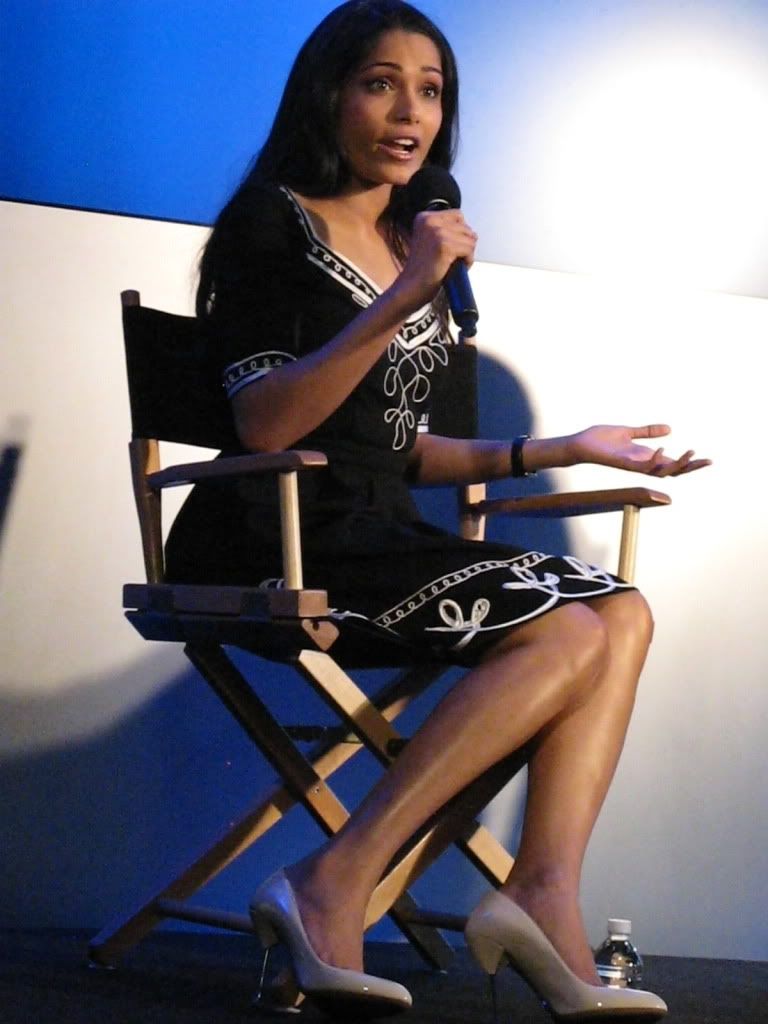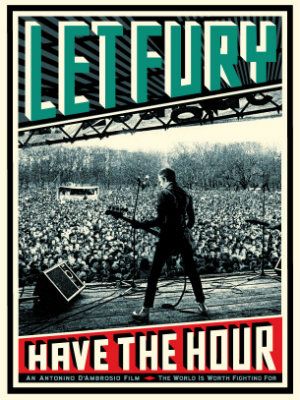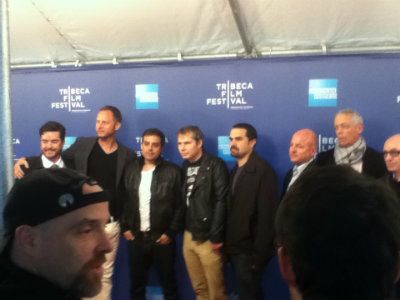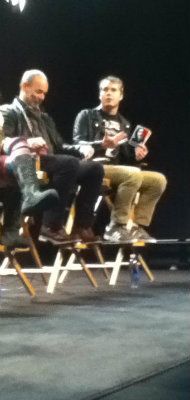I love this film.
The film had me drinking the Rodriguez Koolaid almost from the get go. I was so much a fan by the end that I went out and bought both Rodriguez CDs not long after seeing the film.
The film tells the story of Sixto Rodriguez and his relationship with his fans in South Africa. I say specifically South Africa this because the story of Rodriguez is a bit more complicated than it is portrayed in the film (per the liner notes for the first album- Cold Fact).
The short version of the story is that in 1970 Rodriguez was discovered playing dive bars on Detroit and given a record contract. His first album, Cold Fact was a critical success but a popular failure. His second album, Coming From Reality, was also a failure, selling less than the first. As work was being started on a third album, the plug was pulled and Rodriguez went back to his regular job doing manual labor and demolition.
Unbeknownst to him, his records had found an audience in South Africa, where over time he grew to being bigger than Elvis and the Beatles. Since in those days there was no Internet rumors spread, and it was largely thought that Rodriguez was dead (depending on the version, dying spectacularly). However, some people never stopped looking and the lost superstar was eventually found.
Great music mixes with one hell of a tale with the result is one of my favorite films of Tribeca and of the year. If the song
I Wonder doesn't get stuck in your head you're obviously immune to ear worms.
This is a story that will warm the cockles of your heart, and make you believe that we all have a chance to eventually be found out as being the superstar we all know we are.
Wow, wow and wow.
I didn't see Chocko at the press screening, however when I saw him at the very next film he was like "did you see Sugar Man? Were you there? Tell me you just saw that."
I was there and I saw that, and it was clear he too had drunk the Koolaid
It was one of those "oh shit" moments when you suddenly realize that you're seeing something mind boggling special that you're going to have to go out and share with people. It's one of those moments when you realize that you've just gotten in on the ground floor of something that is going to be huge...and if it doesn't end up huge you're going to have to go out and break heads to find out why.
The story of Rodriguez is an amazing one. It's the story that is, in it's way, the great rags to riches (after a fashion) tale. Its one of the most hopeful and soul affirming stories out there.
I loved this film almost more than words.
Actually the words that came to mind when the film ended was "That was so cool" followed by " how the hell do I get the CDs?"
---
Going into the screening we were given a notice saying that on Friday the 27th a special concert was going to be given at The City Winery. They asked us to RSVP so as soon as I got home I RSVP'd as did. Chocko RSVP'd too.
Having been made fans of the man, both Chocko and I went scrambling through the record stores of NYC in the hopes of getting the CDs intime for the concert. We both hoped that if we got into the concert we'd be able to get the CDs signed.
Armed with the CDs we made our way to The City Winery and found that our names had indeed been included on the list to get in.
We took up seats at the end of of one of the tables most center to the stage and sat and talked while the place filled in a bit. I told my friend that I did the blog because every now and again I found something that made be become a crazy fan boy again. Every now and again I found something that reawakened the passion. When the passion was gone I was going to hang up Unseen.
Searching for Sugar Man was something that resparked some of the passion.
There was a brief introduction and three short clips from the film then Rodruiguez was introduced and he strode out.
Beginning with Cole Porter's
Just One of Those Things and continuing on for 8 songs that was half his own material and half covers Rodriguez rocked the house, truly hitting his stride in the third song,
Rich Folks Hoax . In between songs he joked and made a few political references. He closed the much too short set with a cover of Midnight Oil's
Redneck Wonderland, which, had he not said anything could easily have fit on to one of his albums.
After the set we sat and waited for Rodriguez to come out. It took a little bit but he finally came out and I followed Chocko over to where one of Rodriguez's handlers was talking to some other press people. Chocko asked if it would be okay if we got some CDs signed and he said that would be fine. We were then told we should go downstairs with Rodriguez and some press people where they were going to do some interviews.
Chocko was called over and after a handshake and a hug Rodriguez had Chocko sit down so they could chat while he signed. The conversation went on for a couple of minutes before the handler said it was time. Chocko then asked Rodriguez if I could come over and get a signature as well. He then called me over. He shook my hand, gave me a hug and then had me sat down and we started to talk briefly as his handler got a bit anxious.
I told him I loved the movie and I loved his music. I explained I went out to get the CDs after the movie. He asked where I saw the movie, and I told him at the press screening, I added that while I saw the movie for the purpose of reviewing it, I and Chocko were here at the concert and getting the signatures because I was now a fan. He shook my hand and I left.
As Chocko and I left we debated staying and doing a full interview, you wouldn't believe how easy it is to fall into a conversation with him, however while Chocko had his time with Rodriguez I had heard the handler say that there was a long line for interviews.
It was a blast.
It was fun.
I want to see him backed with a band.
The set list for those interested was:
Just One of Those Things
La Vie En Rose (This was incredibly beautiful)
Rich Folks Hoax
Sugar Man
Fever
Crucify Your Mind
Inner City Blues
Redneck Wonderland





































